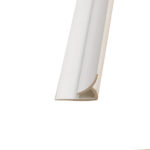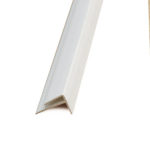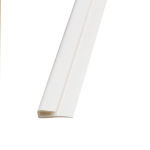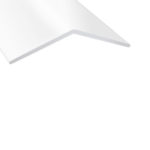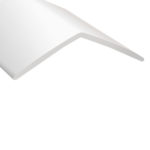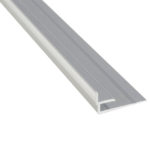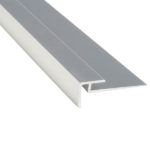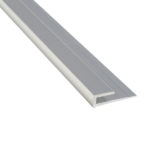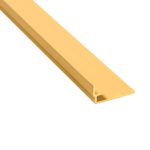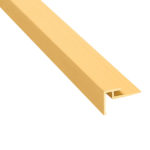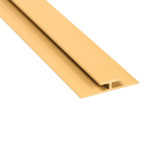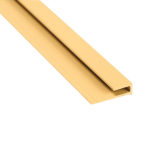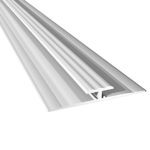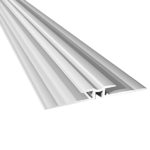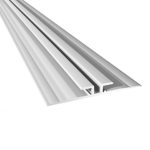
Slide
What is Thermoplastic?
Learn about Thermoplastic at Marlite, a leading manufacturer of interior wall systems for commercial markets.
What Is Thermoplastic?
Thermoplastic is a versatile and innovative material that has revolutionized various industries, including construction and interior design. At its core, a thermoplastic is a type of plastic polymer with a unique property: it becomes pliable or moldable when heated and solidifies upon cooling, all without undergoing significant chemical changes. This characteristic allows thermoplastics to be reshaped and recycled multiple times, making them both practical and environmentally friendly.
In the world of interior design and construction, thermoplastics have opened up new possibilities for creating durable, flexible, and aesthetically pleasing surfaces. At Marlite, we’ve harnessed the power of thermoplastic technology in our Volta™ Flex Sheets, pushing the boundaries of what’s possible in wall panel design.
As we explore the world of thermoplastics, you’ll discover how these remarkable materials are shaping the future of interior spaces, offering unparalleled design flexibility, durability, and sustainability. Whether you’re an architect, designer, or property owner, understanding thermoplastics can help you make informed decisions about the materials you use in your projects.
Properties and advantages of thermoplastic materials
Thermoplastics have become increasingly popular in construction and interior design, thanks to their unique combination of properties. Understanding these characteristics helps explain why Marlite’s Volta and other thermoplastic products are revolutionizing the industry. Let’s explore the key properties and advantages of thermoplastic materials:
1. Strength and flexibility
Thermoplastics offer an impressive balance of strength and flexibility. This combination allows for:
- Impact resistance: Thermoplastics can absorb shocks and impacts without cracking or shattering.
- Structural integrity: Despite their flexibility, thermoplastics maintain their shape under normal conditions.
- Versatility in design: The material can be molded into complex shapes while retaining its strength.
Marlite’s Volta™ Dimensional Flex Sheets leverage these properties to create durable yet visually striking wall panels that can withstand the rigors of high-traffic areas.
2. Moldability and remoldability
One of the most significant advantages of thermoplastics is their ability to be molded and remolded. This characteristic offers several benefits:
- Custom designs: Thermoplastics can be formed into virtually any shape, allowing for unique, custom designs.
- Easy modifications: If changes are needed, the material can be reheated and reshaped.
- Efficient manufacturing: Complex shapes can be produced quickly and consistently.
3. Recyclability
In an era of increasing environmental consciousness, the recyclability of thermoplastics is a major advantage:
- Reduced waste: Unused material and old products can be melted down and reused.
- Energy efficiency: Recycling thermoplastics requires less energy than producing new material.
- Circular economy: This recyclability supports sustainable manufacturing practices.
4. Chemical resistance
Many thermoplastics exhibit excellent resistance to a wide range of chemicals:
- Durability in harsh environments: This makes them suitable for use in laboratories, industrial settings, and other challenging locations.
- Easy cleaning: Most chemicals used for cleaning and disinfecting don’t damage thermoplastics.
- Long-lasting appearance: Resistance to staining helps maintain the material’s aesthetic over time.
5. Lightweight nature
Thermoplastics are notably lighter than many traditional construction materials:
- Ease of installation: Lighter materials are easier and safer to handle during installation.
- Reduced structural load: This can be particularly beneficial in renovations of existing buildings.
- Cost-effective transportation: Lower weight means reduced shipping costs.
6. Durability and longevity
Thermoplastics are known for their long-lasting performance:
- Weather resistance: Many thermoplastics can withstand prolonged exposure to sunlight and moisture without degrading.
- Wear resistance: They maintain their appearance and performance even in high-traffic areas.
- Cost-effectiveness: While the initial cost may be higher than some traditional materials, the longevity of thermoplastics often results in lower long-term costs.
7. Thermal and acoustic insulation
Many thermoplastics offer excellent thermal and acoustic insulation properties:
- Energy efficiency: Thermoplastic panels can contribute to better temperature regulation in buildings.
- Noise reduction: They can help dampen sound, creating more comfortable interior environments.
At Marlite, we harness these properties in Volta thermoplastic sheets, providing our clients with wall panels that are not only visually stunning but also practical and durable. The combination of strength, flexibility, and design potential makes thermoplastics an ideal choice for modern interior design and construction projects.
By understanding these properties and advantages, it becomes clear why thermoplastics are increasingly the material of choice for innovative, sustainable, and high-performance building solutions. Whether you’re looking to create a unique aesthetic, improve durability, or enhance sustainability, thermoplastic materials offer a compelling solution.
Applications of thermoplastic materials in interior design and construction
Thermoplastic materials have found a wide range of applications in interior design and construction due to their unique properties. These versatile materials are being used to enhance spaces and solve design challenges.
Wall panels and decorative elements
One of the most popular applications of thermoplastics in interior design is in the creation of wall panels and decorative elements. For example, Marlite’s Volta Dimensional Flex Sheets demonstrate how thermoplastics can be used to create lightweight, flexible panels with three-dimensional patterns.
Thermoplastic wall panels offer several advantages:
- Dimensional designs that add visual interest and texture to spaces
- Lightweight nature, typically around 1/4 pound per square foot, making installation easier
- Flexibility that allows for easier transportation and application to curved surfaces
- Durability and resistance to UV exposure and many chemicals
- Easy maintenance and cleaning
These properties make thermoplastic panels suitable for a variety of environments, from commercial spaces and healthcare facilities to educational institutions and residential interiors.
Structural components
Beyond decorative applications, thermoplastics are also used in structural components. Some examples include:
- Partition walls: Thermoplastic materials can be used to create lightweight, movable partition walls that offer sound insulation and design flexibility.
- Ceiling tiles: Thermoplastic ceiling tiles provide durability, moisture resistance, and acoustic properties.
- Furniture components: Many modern furniture designs incorporate thermoplastic elements for their strength, lightweight nature, and moldability.
Acoustic solutions
Thermoplastics play a significant role in acoustic management:
- Sound-absorbing panels: The ability to mold thermoplastics into various shapes allows for the creation of highly effective sound-absorbing panels.
- Acoustic diffusers: Complex shapes that help to scatter sound can be easily produced using thermoplastic materials.
Sustainable design solutions
As sustainability becomes increasingly important in design and construction, thermoplastics offer several advantages:
- Recyclability: Many thermoplastic materials can be recycled at the end of their useful life.
- Energy efficiency: Thermoplastic panels can contribute to better insulation in buildings.
- Longevity: The durability of thermoplastics can lead to longer product lifecycles, reducing waste.
These applications demonstrate the versatility of thermoplastic materials in interior design and construction. From decorative elements to functional components, thermoplastics offer designers and architects a wide range of possibilities for creating innovative, durable, and sustainable spaces.
Frequently asked questions (FAQs) about thermoplastic
Q: What is thermoplastic material?
A: Thermoplastic material is a type of plastic polymer that becomes pliable or moldable when heated and solidifies upon cooling. This process can be repeated multiple times without significant degradation of the material’s properties.
Q: How do thermoplastic sheets differ from other wall materials?
A: Thermoplastic sheets offer unique advantages over traditional wall materials:
- They’re typically lighter and more flexible than materials like wood or metal.
- They can be molded into complex shapes and patterns more easily.
- Many thermoplastic sheets are more resistant to moisture and chemicals than some traditional materials.
- They often offer better sound and thermal insulation properties.
Q: Are thermoplastics environmentally friendly?
A: Thermoplastics can be environmentally friendly in several ways:
- They’re often recyclable, unlike many thermoset plastics.
- Their durability means they may need to be replaced less frequently.
- Some thermoplastics are now being made from renewable resources. However, like all plastics, their environmental impact depends on proper disposal and recycling practices.
Q: Can thermoplastic sheets be used in exterior applications?
A: While some thermoplastics are suitable for exterior use, not all are. Many thermoplastics are UV-resistant and weather-resistant, making them appropriate for outdoor applications. However, it’s essential to check the specifications of the specific thermoplastic material to ensure it’s suitable for exterior use.
Q: How do thermoplastics compare to thermoplastic elastomers (TPEs)?
A: While both are types of plastics, they have different properties:
- Thermoplastics are generally harder and less flexible than TPEs.
- TPEs combine the characteristics of thermoplastics and elastomers (rubber-like materials), offering more elasticity.
- Both can be melted and reshaped, but TPEs typically have a lower melting point.
- Thermoplastics are often used for more rigid applications, while TPEs are used where more flexibility is needed.
Q: What’s the difference between thermoplastic and thermoplastic rubber?
A: Thermoplastic rubber, also known as thermoplastic elastomer (TPE), is a specific category of thermoplastic:
- Regular thermoplastics are generally harder and less elastic.
- Thermoplastic rubber combines the processability of thermoplastics with the elasticity of rubber.
- Thermoplastic rubber can stretch and return to its original shape more easily than standard thermoplastics.
- Both can be melted and reshaped, unlike traditional vulcanized rubber.
Q: How does the strength of thermoplastics compare to other materials?
A: The strength of thermoplastics can vary widely depending on the specific type:
- Some high-performance thermoplastics can rival or exceed the strength of certain metals.
- Compared to wood, many thermoplastics offer better moisture resistance and consistency in properties.
- Thermoplastics generally offer better impact resistance than many ceramics or glass.
- However, they may not perform as well as some materials in extreme heat conditions.
Q: Are all thermoplastics the same in terms of heat resistance?
A: No, different thermoplastics have different heat resistance properties:
- Some, like PEEK (Polyether Ether Ketone), can withstand very high temperatures.
- Others, like polyethylene, have lower melting points.
- The heat resistance of a thermoplastic is an important factor to consider when choosing a material for a specific application.


